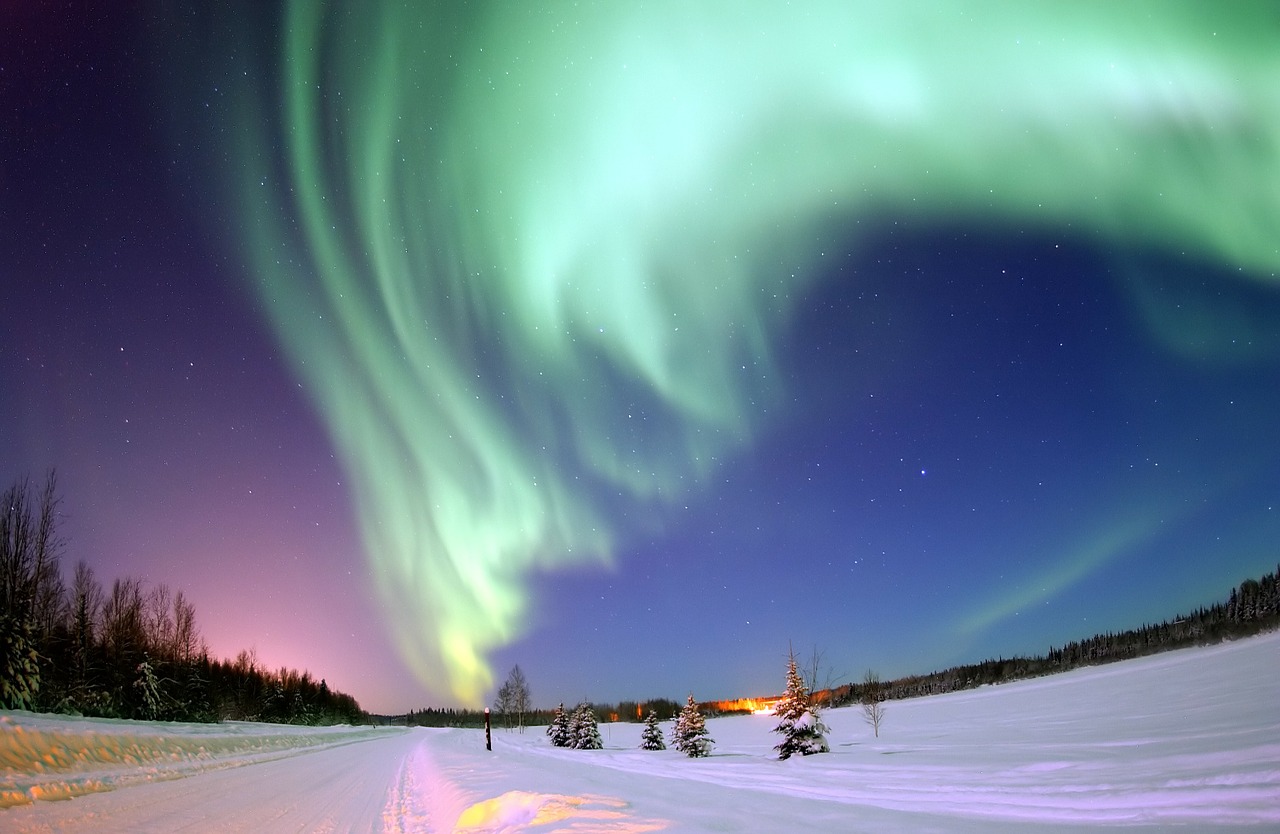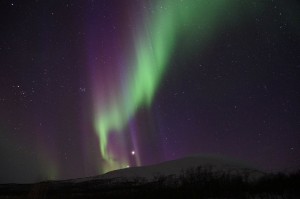Aurora Borealis and Aurora Australis – The Worlds Natural Light Show

Aurora is a phenomenon which occurs typically in the ionosphere within the night sky. Beautiful and often haunting, there are many ideas about where these lights come from and what causes them, but there is a very simple scientific reason for these lights.
Auroras are caused by emissions of photons in the Earth’s ionosphere, above 80 km, so it makes sense that the scientific cause is an effect of ionized nitrogen atoms regaining an electron and also oxygen and nitrogen atoms returning from an excited state to ground state. It is unusual that Oxygen specifically returns to ground state in different ways, and emits different colors of light in different amounts of time. For example, it can take almost a full second to emit green light, while almost a full two minutes to emit red. From time to time collisions with other molecules will absorb the “excitation” or energy, and this can prevent emission of light in total. At the highest point in the atmosphere, scientists have found there is both a higher percentage of oxygen, and also that the oxygen is thinner. This prevents most collisions from taking place and therefore allows the show of red light. As we progress lower in the atmosphere, collisions are more likely therefore red emissions become more rare and eventually once low enough, even green emissions stop happening. This is also why there is a colour difference dependant on altitude; because of both the percentage and thinner oxygen at higher levels lead to red and descending from there, green, and descending further, nitrogen begins its emissions of blue and red, and eventually all emissions stop.
The different colours that are broadcast depend on the type of emission which takes place. With oxygen emissions, one will find a green to brownish red light emitted. In the instance of nitrogen emissions, rather a blue or a red light will be emitted. With regard to the nitrogenous emissions the colour depends mostly whether the atom is regaining an electron after being ionized, or if it is returning to ground state from an excited state.
Also to be noted of importance is the factor of solar wind, which produces a constant flow of ions from the Sun. Earth’s magnetic field is excellent at trapping these particles, and quite often most of the ions are directed to the poles due to magnetic force. It has also been shown that Aurora Phenomenon tends to be stronger and frequent during the intense phases of the Sun, where when coronal mass ejections cause higher than normal solar wind. This results in bright curtains which create a ring around the poles.
Although Auroras can be seen in many different areas of the Earth, especially when magnetic storms carry over onto different areas, typically the brightest and the most frequent are seen at the North and South poles. The reason for this has to do with Earth’s magnetic field. Imagine lines coming from each pole, surrounding the Earth and attaching to the opposite pole. Thus, what happens is most of the ions are attracted to the strongest area of magnetism, which would be the North and South Pole. This is also why a compass works much the way it does – North has a stronger pull, thus the needle faces north. Therefore, when solar winds carry ions over to the earth, they are pulled in to the poles resulting in the many beautiful colours of Aurora. As well, for some reason, Geomagnetic storms can cause Auroras, and this seems to only happen around the equinoxes and likely has something to do with the placement of the earth at that time, within the solar system.
Aurora comes in two main forms. Borealis occurs only at the North Pole and is named after the Roman goddess of dawn, Aurora, and the Greek name for north wind, Boreas. Borealis goes by the common name of Northern Lights, as it can only be seen in the northern hemisphere.
Australis is the South Pole Aurora. Australis is only visible from high southern latitudes in Antarctica, South America, or Australasia. Australis’ name means “of the South.”









